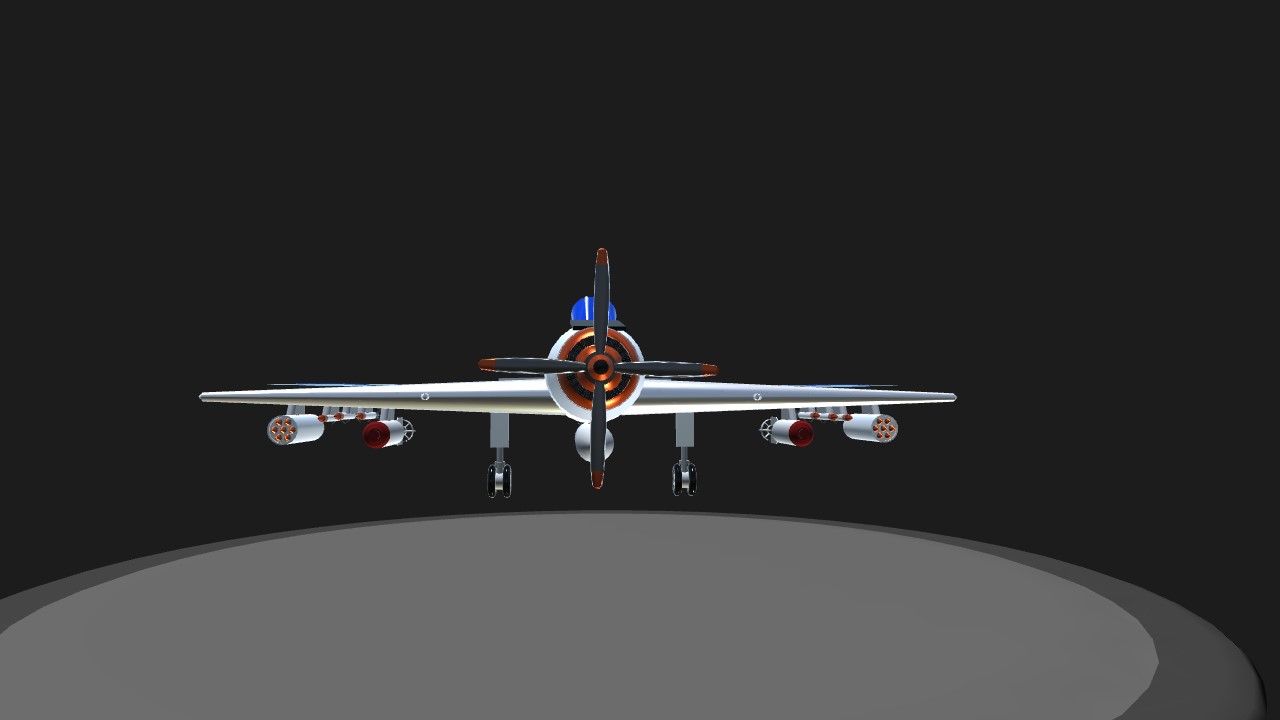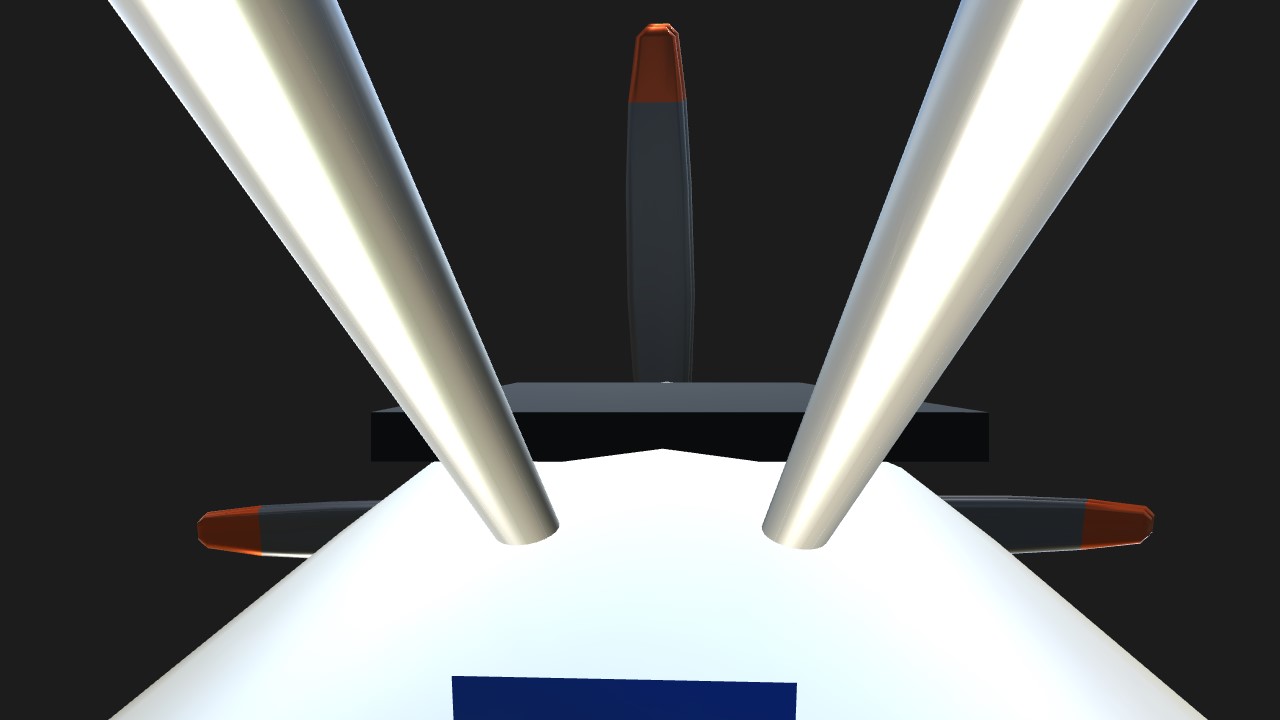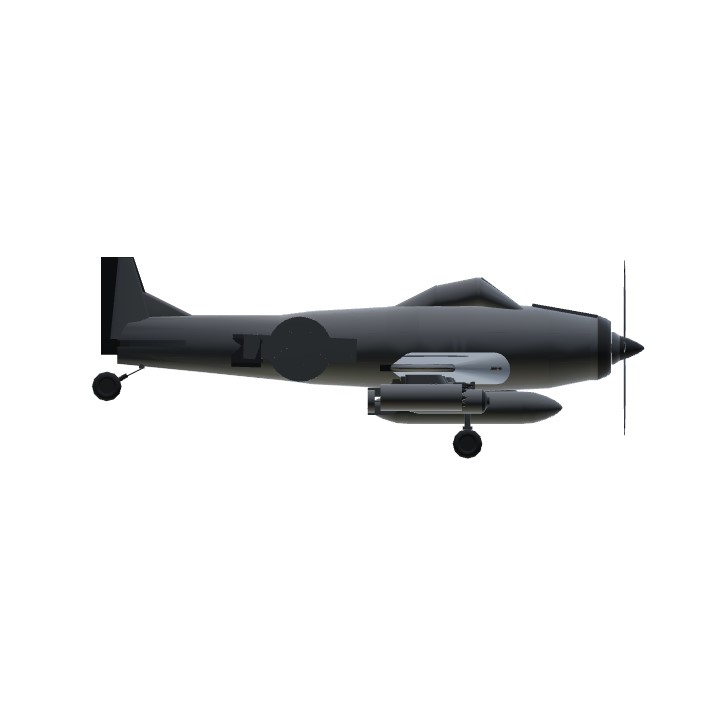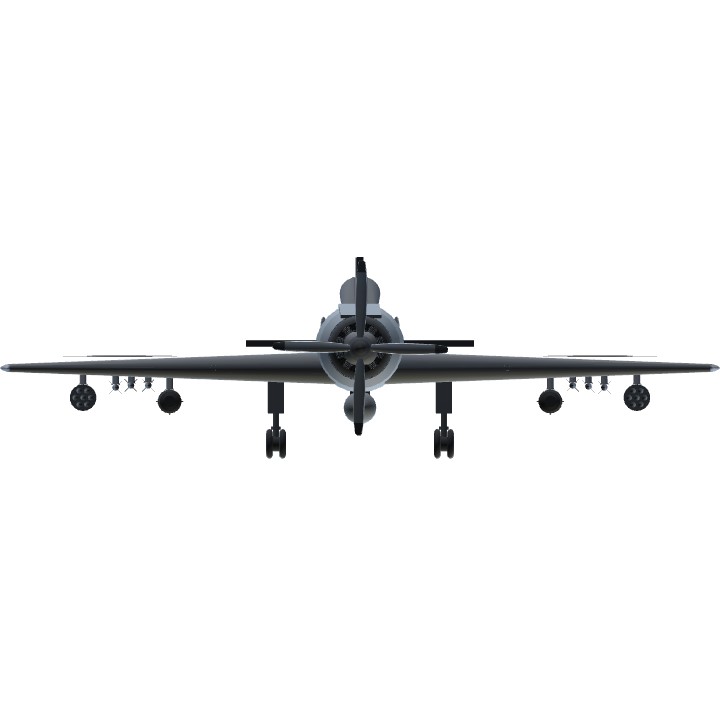Wiki: The piston-engined Skyraider was designed during World War II to meet United States Navy requirements for a carrier-based, single-seat, long-range, high performance dive/torpedo bomber, to follow-on from earlier types such as the Curtiss SB2C Helldiver and Grumman TBF Avenger.[3] Designed by Ed Heinemann of the Douglas Aircraft Company, prototypes were ordered on 6 July 1944 as the XBT2D-1. The XBT2D-1 made its first flight on 18 March 1945 and in April 1945, the USN began evaluation of the aircraft at the Naval Air Test Center (NATC).[4] In December 1946, after a designation change to AD-1, delivery of the first production aircraft to a fleet squadron was made to VA-19A.[5]The AD-1 was built at Douglas' El Segundo plant in Southern California. In his memoir The Lonely Sky, test pilot Bill Bridgeman describes the routine yet sometimes hazardous work of certifying AD-1s fresh off the assembly line at a rate of two aircraft per day for delivery to the U.S. Navy in 1949 and 1950.[6]A Douglas XBT2D-1 Skyraider prototype.The low-wing monoplane design started with a Wright R-3350 Duplex-Cyclone radial engine, later upgraded several times. Its distinctive feature was large straight wings with seven hard points apiece. These gave the aircraft excellent low-speed maneuverability, and enabled it to carry a large amount of ordnance over a considerable combat radius and loiter time for its size, comparable to much heavier subsonic or supersonic jets. The aircraft was optimized for the ground-attack mission and was armored against ground fire in key locations unlike faster fighters adapted to carry bombs, such as the Vought F4U Corsair or North American P-51 Mustang, which were retired by U.S. forces before the 1960s.Shortly after Heinemann began design of the XBT2D-1, a study was issued that showed for every 100 lb (45 kg) of weight reduction, the takeoff run was decreased by 8 ft (2.4 m), the combat radius increased by 22 mi (35 km) and the rate-of-climb increased by 18
Specifications
General Characteristics
- Created On iOS
- Wingspan 36.3ft (11.0m)
- Length 27.9ft (8.5m)
- Height 10.3ft (3.1m)
- Empty Weight 7,501lbs (3,402kg)
- Loaded Weight 8,443lbs (3,829kg)
Performance
- Horse Power/Weight Ratio 6.099
- Wing Loading 55.2lbs/ft2 (269.3kg/m2)
- Wing Area 153.0ft2 (14.2m2)
- Drag Points 6699
Parts
- Number of Parts 111
- Control Surfaces 5
- Performance Cost 565







MiG-21 @ThePrototype
Νρ@BRC21yt
Thanks! @ThePrototype
Νιςε